Bobby Fischer came to a sad end. Fischer, the most famous and greatest chess player the U.S. and maybe the world ever produced, spent his last decades hiding and in exile. He used up his rare resurfacings ranting against various governments and all Jews. By his 2008 death from kidney failure in Iceland, where his most heralded chessboard moments had taken place in 1972, Fischer’s repulsive late-in-life behaviors had overwhelmed most memories of his heyday and left him culturally irrelevant.
But, there was a time…
And now comes an artifact from Fischer’s vital era. It’s an 8mm black-and-white, silent movie of Fischer getting a shave and gabbing before an August 10, 1971 photo shoot. The reel, provided exclusively to UTSB after the film’s recent digitization, was found in a New York closet among an amazing cache of mostly still shots taken by New York photographer David Attie, who’s doing the shaving in the clip. Fischer was posing that day for Amerika, a Russian-language cultural exchange/propaganda magazine published since the 1940s by the U.S. government for a readership in the Soviet Union.
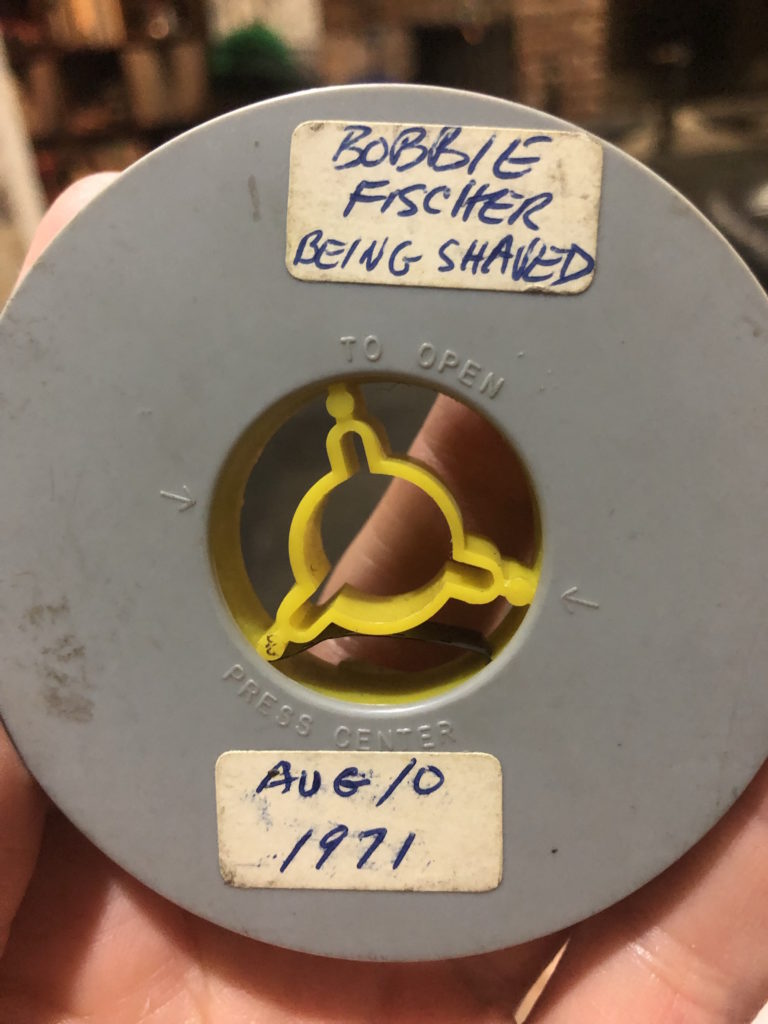
Fischer, at 28 years old, was in the midst of a 20-game winning streak, with no draws, while playing in international tournaments against the strongest players in the world. The dominant run is considered one of the greatest feats in chess history. A year after the shoot with Attie, he captured the world chess championship from Russian grandmaster Boris Spassky. Their bout remains the most famous chess match of all time, a board-game version of Rocky IV, with both competitors serving as, well, pawns in the U.S./Soviet Cold War. Henry Kissinger, President Richard Nixon’s national security advisor, told people at the time and to this day that when he heard that Fischer planned to remain in the U.S. and pull out of the Spassky contest over a spat with organizers, he got involved and personally asked Fischer to go on with the match and prove American exceptionalism and superiority. Fischer denied ever getting Kissinger’s call, but admitted patriotism inspired his change of heart.
“I feel the prestige of this country is at stake,” Fischer told U.S. reporters when word got out that he’d face Spassky after all.
Capturing the world chess title, the first American-born player to do so, rendered Fischer among the most famous people on the planet. “The entire world knows the name Bobby Fischer by now,” host Johnny Carson told him during an appearance on NBC’s Tonight Show after the win.
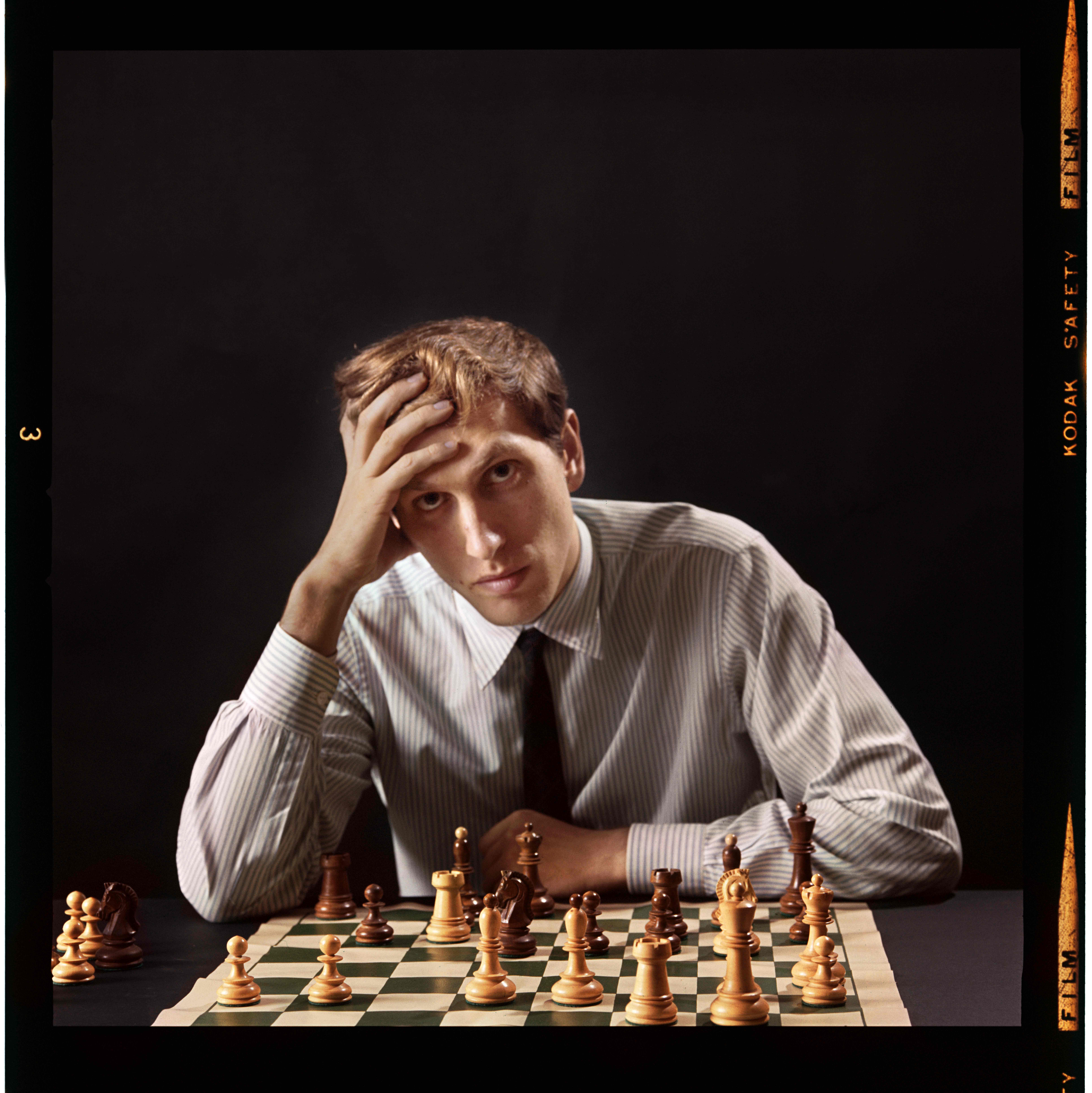
Fischer wilted fast under the spotlight. He signalled the darkness on Carson’s chat show. Carson, perhaps sensing the unhappiness of his guest, asked the new champ if winning the title “was a letdown.” “It was,” Fischer said. “I woke up the day after the thing was over and I just felt different, like something had been taken out of me.”
Fischer would soon cut off any dealings with the media, surrender his chess title, adopt pseudonyms (including “Robert D. James”), get involved with a fundamentalist Christian church (his family was scattered and dysfunctional, but both his biological parents were Jewish) and withdraw from public life. According to a 1985 report in Sports Illustrated, within a decade of his immortalizing win over Spassky, Fischer was laboring anonymously as a cable TV installer in Southern California. In 1981 he was so far removed from celebrity that he was arrested and jailed for two days in Pasadena after being mistaken for a bank robber. Sports Illustrated’s legendary reporter Bill Nack went on a long, surreptitious search for Fischer in Los Angeles in 1985 and found him spending his nights among the city’s homeless, and blending in.
Fischer briefly came out of hiding after a Yugoslav businessman offered a $5 million purse for a Spassky rematch, held in 1992 in war-torn Serbia. Fischer won again in a rout. But neither the chess community nor the American government celebrated Fischer’s competitive comeback: Garry Kasparov, the reigning world titlist at the time, dismissed Fischer/Spassky II as an oldies act and said a match between him and Fischer “wouldn’t be close.” The U.S. Department of Justice ruled that Fischer’s participation in the match violated sanctions imposed on Yugoslavia by President George H.W. Bush for human rights violations, and a federal warrant was issued for his arrest on December 15, 1992.
Fischer never returned to America. He instead lived out his sad final years in Japan, the Philippines, and Iceland. Among the last times he was regarded as newsworthy came when he went on the air for a talk radio station in the Philippines on Sept. 11, 2001, to blame the deadly attacks that had taken place hours earlier in the U.S. on “the Jews.” Fischer, long a Holocaust denier, predicted that a military takeover of America and mass internment of the Jewish citizens were imminent. “They will imprison the Jews,” he said. “They will execute several hundred thousand of them at least.” The radio host could be heard occasionally snickering as his obviously insane guest ranted.
Fischer died of kidney failure on January 17, 2008, after refusing dialysis and other treatments that could have kept him alive. He was 64 years old. His funeral in a Lutheran church outside Reykjavik, Iceland’s capital city, was reportedly attended only by five people: two neighbors, a wife who lived in Japan that few of Fischer’s longtime acquaintances even knew existed, a priest he didn’t know, and the guy who dug his grave.
His pathetic endgame adds gravitas to all mementos of Fischer before the fall. So even 168 seconds of him sitting in a chair, looking youthful and maybe even happy, comes off as an important historical find.
(If you’re viewing on mobile, click “skip ad” to view the video.)
The tales of how David Attie came to shoot Fischer, let alone shave him, and the unearthing of the film about half a century later are stories unto themselves. Attie died in 1982. His son, Eli Attie, says that his father was told by Amerika that the Fischer assignment initially went to Richard Avedon, perhaps the leading portrait photographer of the era.
But Fischer, who considered himself a world-class athlete–most of the 1972 60 Minutes segment on Fischer detailed how he physically trained in the Catskills before big matches as a prizefighter might—didn’t want to sit for a fashion photographer. “Fischer thought this was demeaning to him, and he refused to be photographed by Avedon,” says Eli, now a television writer and producer living in Los Angeles. (Full disclosure: Eli Attie is a longtime friend and bandmate.)
After pooh-poohing Avedon, Fischer was shown the work of other photographers who’d taken assignments for Amerika. He went with Attie, who’d gotten his artistic training from art director Alexey Brodovitch of Harper’s Bazaar fame—who also mentored Avedon.
Fischer agreed to come to Attie’s studio, located in the Lower Manhattan brownstone where he lived with his family, but didn’t hide his eccentricities from the photographer or his family. Fischer wouldn’t tell Attie what day or time he planned to show up, just what week. And upon arriving at the home basically unannounced, Fischer told Attie that he felt stubble on his face, and asked to be shaved before being shot. Attie got a razor. And Dotty Attie, a feminist painter and the photographer’s wife, grabbed an 8mm camera and began filming her husband’s bladework on the celebrated brainiac gamer.
“What I do remember is Fischer looking at himself in the mirror, and, stripped to his mesh undershirt, flexing his arms,” says Dotty, “and then telling us that he exercised every day with Jack Lalanne on television.”
Dotty also remembers Fischer inquiring about what other celebrities her husband had photographed, and being particularly impressed that he’d had a shoot with Jacqueline Bisset, then a young starlet. “Fischer was extremely interested in finding out whether she had large breasts,” she says. For the record: “I forget whether she did or not.”
The 8mm film makes it clear that the photographer and his subject were comfortable with each other; they hit it off after discovering during their banter that Fischer and David Attie had both gone to Brooklyn’s Erasmus Hall High School. After the shoot, which according to the family took several hours, Fischer asked to be fed. “Fischer was of course a giant star at the time,” says Eli, “and [my parents] were thrilled to take him upstairs to where we lived and feed him and spend time with him.”
Fischer and Attie talked that day about getting together again and spoke on the phone trying to work out such a rendezvous. But within mere months of the shoot Fischer signed to face Spassky and left town to train in the Catskills. And with the win, he’d accomplished his lifetime goal. And his withdrawal began.
Attie’s photography career, meanwhile, took off years after his death.
In 2012, while procrastinating on a script he was writing for the Fox medical drama, “House,” Eli googled “David Attie.” “Not much came up,” he says. He thought his father deserved a larger “digital footprint,” and decided to do something to get him one. He began sending copies of some fine-art photos taken by his father that were framed and still hanging at the family home to galleries, but found little or no interest in response. Art dealers told Eli a hard truth: The only way to make a name for his departed dad would be to forget the artsy stuff and find celebrity shots.
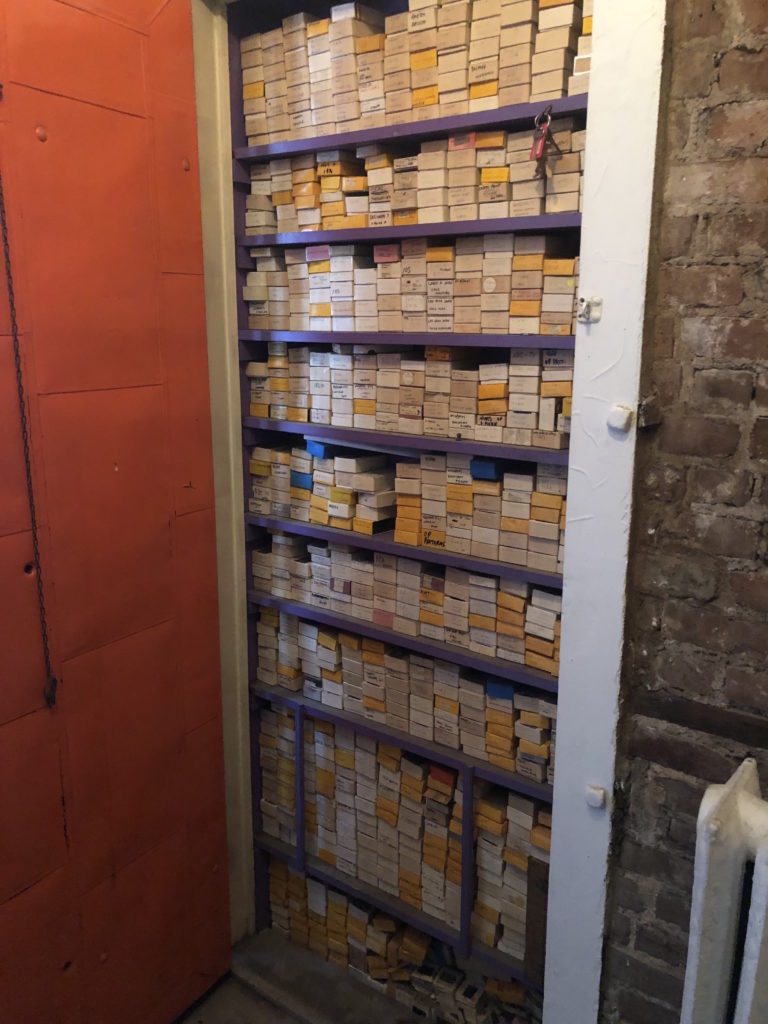
So Eli dove into the closets full of David Attie’s negatives, slides and prints (above). And he discovered vintage shots of, among others: Truman Capote, Lorraine Hansberry, Ralph Ellison, W.E.B. Dubois, Robbie Robertson and the Band, plus the Jacqueline Bisset shots that titillated Fischer, and lots of the shots taken of Fischer on shaving day in 1971.
Curators got interested. Attie’s photos of Capote, taken in Brooklyn in the late 1950s, were the first to garner commercial curiousity. In 2015, Penguin Random House published Brooklyn: A Personal Memoir: With the lost photographs of David Attie, a book pairing Capote’s words exclusively with Attie’s shots. And the next year, Attie’s Capote portfolio was given its own show by the Brooklyn Historical Society, which was written up in the New Yorker and New York Times, among others. Photos of the Band, taken by Attie in 1969 for a Time magazine cover but never used, showed up in the recently released Robbie Robertson documentary, Once Were Brothers. Sports Illustrated, the magazine that blurred the lines between nerd and jock long before esports existed by putting Fischer on its cover in August 1972, now uses an Attie shot of the chess king in its online archives, accompanying Nack’s sleuthing story from 1985. Last year, American Chess magazine put an Attie shot of Fischer on the cover—”That was the first cover he’d gotten since he was alive,” says the photographer’s proud son—and then released a t-shirt using the same photo.
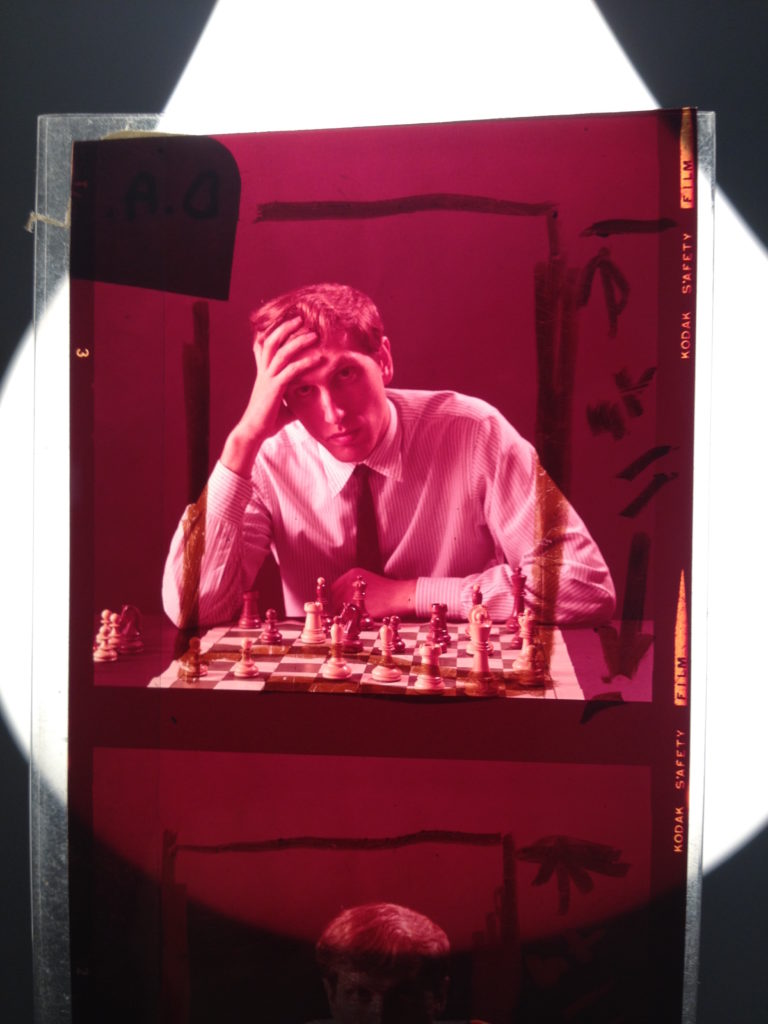
“While my dad’s photos of Fischer are only starting to get seen now,” Eli Attie says, “if Avedon had taken them, these would almost certainly be the most famous and iconic images of Bobby Fischer.”
Because of the volume of material stored in his childhood home, Eli has yet to go through all the film that his father left behind. But he spends time photo foraging on trips back East. And during a dive into his dad’s old closets late last year, he happened for the first time upon the 8mm reel labeled “Bobbie Fischer being shaved.” He finally had proof that the family lore about the day his dad took a razor to one of the 20th century’s most fascinating characters was more than mere legend.
“It’s a real joy for me to have unearthed them,” Eli Attie says. “Fischer lost his way later in life, but in 1971, he was just a smart Jewish guy from Brooklyn, like my dad, trying to put something great into the world.”



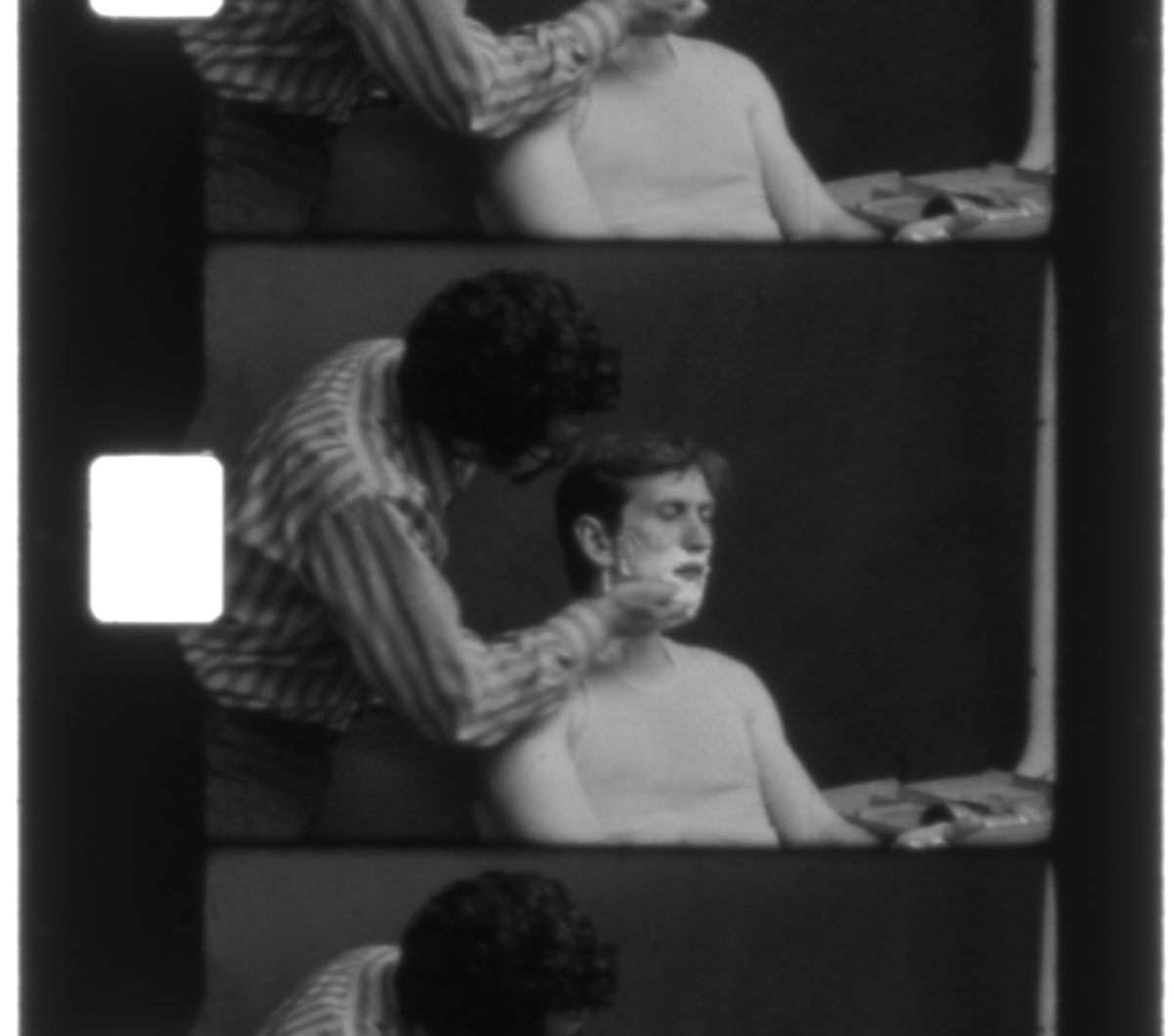
JIK says:
Holy fuck I miss Deadspin. There’s not another site on the planet that I’d find an article on this.
April 24, 2020 — 1:22 pm
Donmattinglyssideburns says:
Yup. Agreed. You never realize how much. Even “following“ them on twitter doesn’t give you this. Between this,Patrick herding goats, and Tim’s hugs compilation You realize how ephemeral that site was and how strange and wonderful that alchemy was.
I am not even reading all the articles in one sitting this time I want to savor them in the barren, coming weeks So I’m limiting myself to just a couple a day since Kelseys twitter account alerted me to the reemergence
April 24, 2020 — 5:16 pm
lanciastratos says:
here here. these guys were and are the best.
in hindsight I can’t believe how much time I spent on that site while ‘working.’
April 25, 2020 — 4:23 pm
mathesond says:
Agreed, JIK. That though went through my head when I was half-done the article.
April 24, 2020 — 1:47 pm
Thejudomadonna says:
Dave McKenna is a goddamn national treasure, and i don’t care who knows it.
April 24, 2020 — 2:53 pm
Lemonade into Lemons says:
I used to read the Washington City Paper back in the day. There was an article that was run regarding how Congress was dicking around with allowable flights into DCA/National Airport (long story, basically DCA had inbound flights limited by distance to keep down noise at night, but the Senate, specifically one John McCain monkeyed around with legislation so that Phoenix became a direct flight; coincidence no doubt). One Saturday about a year after that article ran, I sent an email to the City Paper asking if anything had changed at DCA since I was directly on the approach into DCA and shit was loud at night. I got an email back later that day saying that’s a hell of an idea for a follow-up article, and about a week later I got a brace of CityPaper t-shirts in the mail. The point of the exegesis is that I’m pretty sure it was McKenna manning the weekend desk who liked the email and sent me those shirts. Stand=up guy, and his “Cheap Seats” column in the CityPaper was tremendous.
April 25, 2020 — 11:27 pm
Garfield Thelonius Remington III says:
I missed you, Dave.
April 24, 2020 — 3:19 pm
SoJaVale says:
Thank you for this! I still find myself absentmindedly typing deadspin into my browser every day… I miss the site and the community all the time.
April 24, 2020 — 3:29 pm
yerp says:
I saw that headline, and had no idea wtf to expect, but with McKenna’s byline under the headline, I knew it’d be worth the read. And it was. I have nothing pithy to add, just thank you, UTSB and McKenna (and CBD co investors)
April 24, 2020 — 3:36 pm
75% of the way to full Mike Gundy says:
For the love of everything, we need you all back. This time period would be so much better with you all here posting in it. Everyone of you guys and gals!
April 24, 2020 — 4:36 pm
Awesome's Razor says:
Tremendous story.
April 24, 2020 — 4:51 pm
WARDAWG says:
Anyone else dying to see the Jacqueline Bisset shots? Do us a favor Dave and throw a link at the bottom
April 24, 2020 — 5:20 pm
fakenameisITSAAFAAAAAAAKE says:
Incredible write up and I’m so glad I got to see these images and the video.
April 24, 2020 — 5:38 pm
Big C says:
Exhibit A for why Deadspin is missed.
April 24, 2020 — 5:40 pm
Phyllis Cole says:
Marvelous article…….2 great talents. Fischer and Attie……one lost his way, the other never did!
April 25, 2020 — 1:20 pm
Mike says:
Dave McKenna is unquestionably my favorite sportswriter on Earth. Every piece is so brilliant.
April 25, 2020 — 11:54 pm
biff_wonsley says:
I have nothing further to add than JIK, so I’ll simply copy & paste.
Holy fuck I miss Deadspin. There’s not another site on the planet that I’d find an article on this.
April 26, 2020 — 2:49 pm